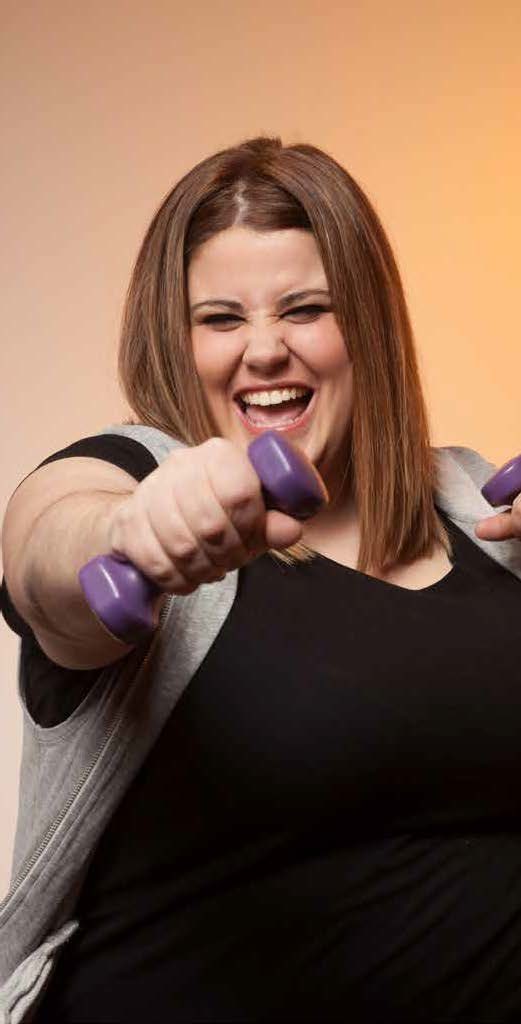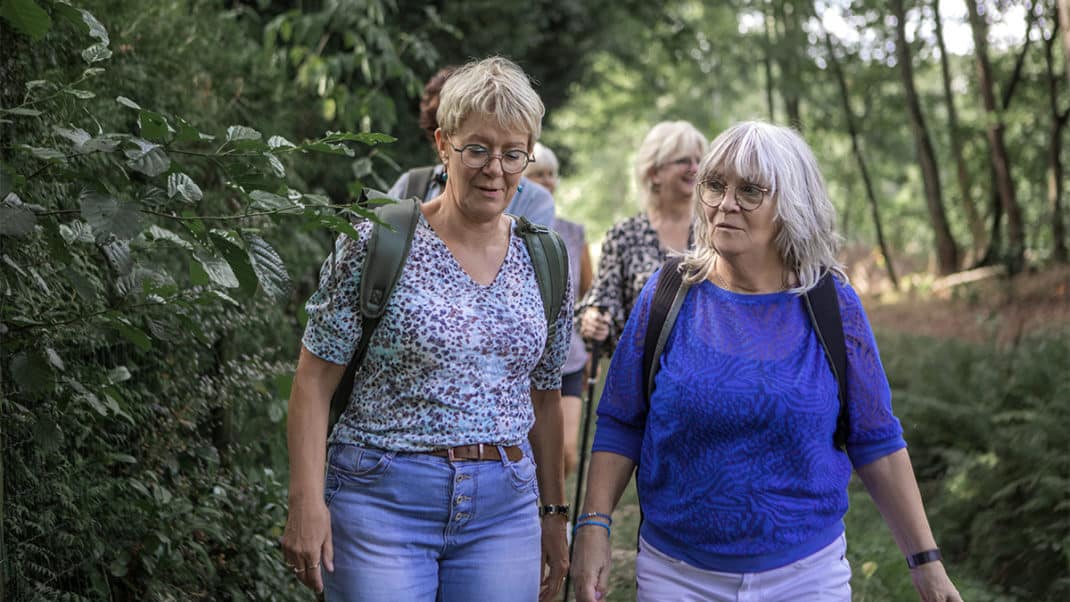Undoing Weight Bias Within Yourself
10 steps that will help fitness and wellness professionals acknowledge and dismantle negative beliefs about obesity.

Fortunately for serious minds, a bias recognized is a bias sterilized.
—Benjamin Haydon, British painter
A majority of health, medical, allied health, and fitness and wellness professionals exhibit some degree of weight bias (also known as weight stigma), which can be defined as “the social devaluation and denigration of people perceived to carry excess weight” (Tomiyama 2014). Whether it stems from a belief that shame will motivate positive change (it does not) or from the notion that poor individual choices and lack of willpower are the root causes of obesity (usually they are not), weight bias persists both consciously and unconsciously in many people in the helping professions.
The outcomes of such bias include poorer health status—physical and mental—for people who experience it, and a decrease in the effectiveness of interventions designed to help people address obesity (Puhl & Suh 2015). For detailed information on the prevalence and consequences of weight bias, see the July 2016* IDEA Fitness Journal feature “It’s Time to End the Stigma of Obesity” (*July–August print edition).
Bias comes in two forms: implicit bias and explicit bias. Implicit bias represents thoughts and beliefs we hold at a subconscious level, outside of conscious awareness and intentional control. Explicit bias reflects thoughts and beliefs we hold and endorse at a conscious level. How can we go about “removing” detrimental beliefs?
This article offers a 10-step process to help fitness and wellness professionals reduce their own biases toward people affected by obesity.
Step 1. Build Awareness of Your Bias
To change a harmful behavior, you must first become aware that a problem exists. Researchers at Harvard have developed a simple test, the Weight Implicit Association Test (available at www.projectimplicit.net/nosek/iat/), to help people better understand implicit weight bias. The test does this by measuring the strength of an association between concepts (e.g., “fat” people/thin people) and evaluations (e.g., good/bad) or stereotypes (e.g., hardworking/lazy). Many people find that they exhibit an automatic preference for thin people compared with people who are overweight.
Several other tools are available to assess explicit attitudes toward people with overweight or obesity. These options include the Attitudes About Obese Persons Scale, the Beliefs About Obese Persons Scale, the Fat Phobia Scale (short form) and the Antifat Attitudes Scale (AFAS). These are available in the Bias Toolkit at UConn Rudd Center (http://biastoolkit.uconnruddcenter.org/module1). An e-version of the AFAS can be found at www.weightstigma.info. While it may not be feasible for you to take all of the assessments, commit to taking one or two—such as the Weight Implicit Association Test and the e-version of the AFAS.
Step 2. Test Your Assumptions
Self-assessments aim to help you identify ingrained beliefs or assumptions. After taking the tests, go through some self-reflection. How did the process make you feel? What thoughts or beliefs may have influenced your responses? What assumptions might you make about a person—based on his or her weight—regarding character, intelligence, health status or lifestyle behaviors? How might your assumptions be influencing the way you treat clients who have excess weight or obesity? How can you test these assumptions?
For example, a new client with severe obesity signs up for your yoga class. You realize that you assume this client is new to yoga and may have a low fitness level. However, you decide to test your assumption by introducing yourself and your class to the client and asking questions to learn more about her. Will it surprise you if you learn that she has been practicing yoga for years, and over the past 2 years she has lost 10% of her body weight?
Step 3. Get All of the Information
Many people have a simplified belief that obesity results from eating too much and moving too little, and that if people would just reverse that trend, they could achieve and maintain a healthy weight. This is often not the case. Obesity stems from a complex interplay of biology, hormonal factors and environment. If you have clients with obesity, it is incumbent on you to understand the factors involved in their individual paths to obesity; to know how likely it is that your clients will achieve a “normal” body mass index; and to adopt a reasonable and motivating approach to goal setting that will optimize the mental and physical benefits of a health intervention, beyond simply addressing a weight concern.
Step 4. Catch the Thought, Assess the Thought, Change the Thought
As you become more aware of your blindspots, you can break the cycle of bias through the three-step process of “catching the thought” (recognizing when you are having a biased thought or stereotyped feeling about a client or other person), “assessing the thought”(trying to understand what prompted the thought and seeing whether or not there is evidence to support it) and, finally, “changing the thought” (substituting the new, more productive thought that will help to prompt a new, more helpful behavior).
For example, a client with obesity who is working to lose weight shows up for his appointment but has gained 1 pound. A thought creeps into your mind: “He tells me he wants to lose weight, but then I bet he just goes home and eats.” You recognize the thought. You realize that this biased thought is unfair to apply to a client who has shown up for his appointment and is facing many biological, hormonal, social and internal challenges in his efforts to reach his goal. Rather than responding with a passive-aggressive or judgmental comment, you focus less on the client’s weight and more on understanding the successes and challenges he has had while working on behavioral lifestyle changes during the week.
Step 5. Walk a Mile in Their Shoes
One highly effective way to build empathy and understand why biased beliefs are not true is to engage in perspective taking, or “walking a mile in their shoes.”
On the simplest level, you can do this by saying to a client, “Tell me what a day is like for you”or, “Please help me understand how I can best support you in achieving your goals.” If appropriate, you can ask to “shadow” the person for a day. Then your task is to identify the challenges your client encounters and how he or she defies the stereotypes.
The Rudd Center offers several videos that provide the perspective of a person with obesity and offer help on how to facilitate improvements in health behaviors (www.uconnruddcenter.org/weight-bias-stigma-video-exposingweight-bias). Similarly, the American Council on Exercise website features the powerful story of Lee Jordan, a health coach who had severe obesity earlier in his life (http://vimeo.com/111764000). As Jordan shares in his example of experiencing soul-crushing weight bias when he was still “overweight” but 100 pounds lighter than his previous self, many people who are affected by excess weight or obesity may be practicing healthy nutrition and physical activity habits.
This may be especially true of fitness and wellness professionals who are affected by obesity or excess weight. In fact, it is not uncommon for people with obesity who are also advocates for healthy nutrition and physical activity to join the ranks of health and wellness professionals. These professionals may routinely experience stigma from colleagues and potential clients. They are in a particularly powerful position to influence a growing movement to stop weight bias.
Step 6. Learn Motivational Interviewing
Motivational interviewing is a client-centered communication approach that helps a person “talk himself or herself into change.” It relies heavily on empathy and the expression of empathy through open-ended questions, affirmations, reflective listening and summarizing. Learn more at www.motivationalinterviewing.org.
Step 7. Focus Less on the Scale and More on the Behaviors
The most effective and empathetic way to help a person with obesity achieve a healthy weight is by concentrating more on health behaviors and less on the scale. Outcome-centered goals—like the number on a scale—are difficult to control. Process-centered goals focusing on behaviors can more easily be monitored and achieved.
Step 8. Take a Hard Look at the Social Determinants of Health
Many behaviors that contribute to obesity or predict sustained weight loss or improvements in health are heavily influenced by environmental and social conditions, also known as social determinants of health. These factors—which include access to healthful foods, physical activity opportunities, financial resources and cultural norms—strongly affect individual behaviors. When having a conversation about improving nutrition habits and physical activity levels, be sure you consider social determinants rather than applying one-size-fits-all “advice.”
Step 9. Ask Yourself What Exactly You Would Have “Them” Do
If you are still finding it difficult to shake off your stereotypical beliefs about obesity, pause and ask yourself what you would have people do to improve their status if they are affected by obesity. Honestly assess your opinions on willpower, personal responsibility and so on. What if clients did all the things you asked and still had obesity? How would that change or influence your view? How might you then treat a stranger affected by obesity—who for all you know may have already lost 100 pounds but still be overweight?
Step 10. Meditate
There is evidence that practicing loving-kindness meditation, or Metta meditation, can reduce implicit bias. In a study by Kang, Gray & Dovidio (2014), implicit bias decreased significantly in participants who engaged in a 20-minute guided meditation (available from http://marc.ucla.edu/body.cfm?id=22) 5 days per week for 6 weeks.
A Worthy Effort
Ultimately, if you make a concerted effort to undo implicit and explicit weight biases in yourself, you will provide a much higher quality of care and substantially increase your impact when working with individuals affected by excess weight and obesity.
Natalie Digate Muth, MD, MPH, RD
"Natalie Digate Muth, MD, MPH, RDN, FAAP, is a board-certified pediatrician and obesity medicine physician, registered dietitian and health coach. She practices general pediatrics with a focus on healthy family routines, nutrition, physical activity and behavior change in North County, San Diego. She also serves as the senior advisor for healthcare solutions at the American Council on Exercise. Natalie is the author of five books and is committed to helping every child and family thrive. She is a strong advocate for systems and communities that support prevention and wellness across the lifespan, beginning at 9 months of age."






